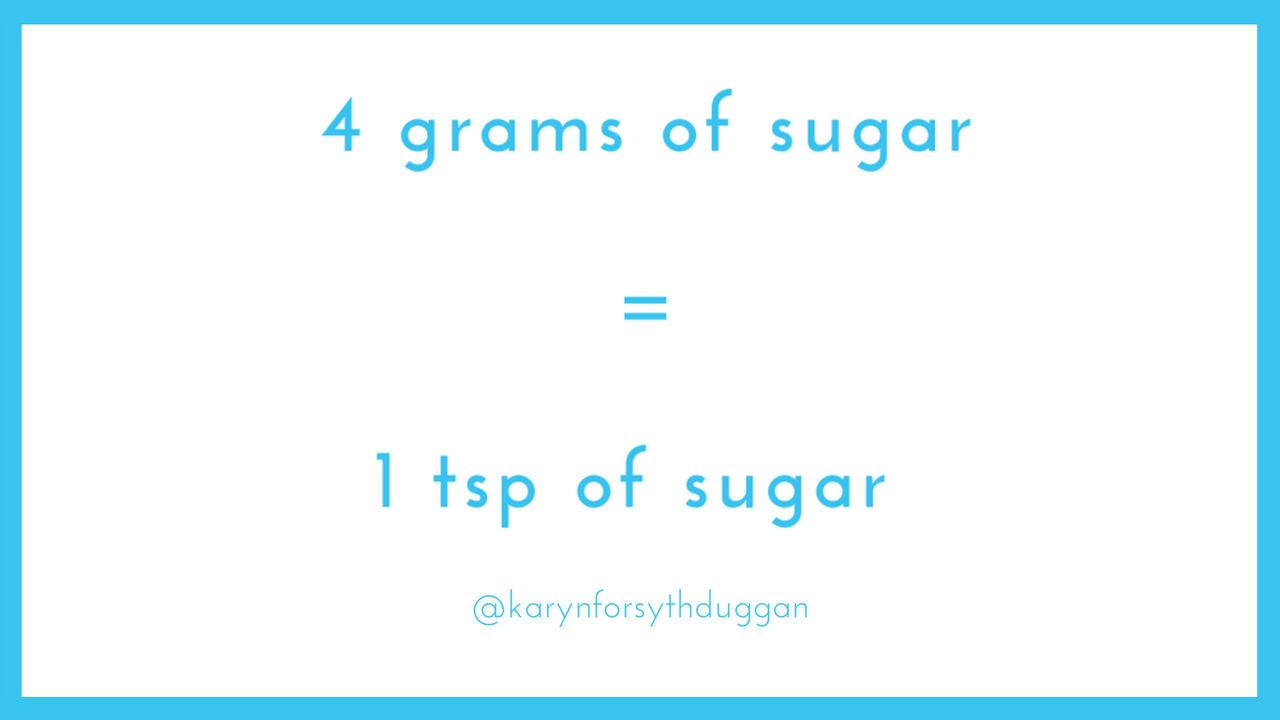Interpreting nutrition labels

Knowing how to read a nutrition label is an essential skill; I’d argue it’s almost a form of self-defense.
Food truly is information, i.e., you essentially program how you feel and function anytime you ingest anything. Therefore, not bothering to read a label is almost tantamount to boarding a plane without knowing its destination…
I realize that sounds extreme, but here’s why it’s critical to read, and understand, a label:
Imagine you’ve been suffering from some sort of digestive upset, e.g., bloating/gas, and despite the incredible discomfort you have no idea why it’s happening/what the triggers are…
You love chewing gum but have never thought to look at the ingredients…after all it’s not really even a food, right? How much impact could gum really have anyway? Turns out, even the little things can have a big influence...
Yes, there is the concept of aerophagia (i.e., repetitive air swallowing, which can, according to some, be exacerbated by chewing gum), but the more likely culprit is the sugar alcohol content (e.g., sorbitol is just one of many sugar alcohols which are ingredients commonly found in sugar-free chewing gum). So, I hear you say, what’s wrong with sugar alcohols? Who cares about sugar alcohols?
If you’re suffering from bloating/gas or any other digestive upset, you need to know that sugar alcohols are commonly associated with digestive discomfort. They’re designed to have less of an impact on your blood sugar, but they’re not completely absorbed by the body, and as a result can cause intestinal discomfort.
So much so, that if you happen to suffer from IBS, you may heard about the low-FODMAP diet, which eliminates Fermentable Oligo-Di-Monosaccharides and Polyols (the umbrella term for sugar-free sweeteners, such as sorbitol, maltitol, xylitol etc.). Low-FODMAP diets have been shown to improve IBS (Altobelli, Del Negro, Angeletti, Latella, 2017).
So, I hope you’ll now agree that reading labels is an important skill to hone. And, when I say reading labels, I mean reading beyond the calorie information...I’m not going to say the calorie details are useless but they’re definitely not the only criteria to be checked.
The easiest way to read a label is by holding it at arms length from your face and simply eyeballing the amount of ingredients listed. Then, simply heed Michael Pollan’s sage advice: “Avoid food products that contain more than five ingredients” (2009, p. 15).
Lengthy ingredient lists typically include all sorts of additives and preservatives - for more information about what to avoid and why, visit the Center for Science in the Public Interest’s post about chemical cuisine.
The following are more specific guidelines:
-
Check the serving size
You may have noticed nutrition labels have been changing over the past couple of years...the serving size is now highlighted, which is helpful.
Packages often contain more than one serving, and this is a detail which is commonly overlooked (especially on beverages)...so, just know you may have to multiply the amount of sugars/fats/proteins/calories etc. listed to get a sense of the potential impact. -
Keep an eye on the calorie count
Again, as above, calories are only part of the picture, but they’re good ‘guardrails’ all the same. -
Know how to interpret the sugar content
The recent label upgrade thankfully included ‘added sugars’ within the listing of total sugars, which is a wonderfully helpful change. So now, without even looking at the ingredients, you know whether or not the product contains added sugars, and if so how much.HOWEVER, this revision has left out a critical piece of information - how to interpret the amount of sugars listed!?
In order to visualize the amount of sugar you’re consuming follow this simple rule:Divide the total grams of sugars listed by 4 to get a visual of the number of teaspoons of sugar.
E.g.,, if something contains 24g of total sugars per serving, that’s 6 tsp of sugar per serving!
-
Be on the lookout for ‘covert’ sugars
As manufacturers are aware of their increasingly savvy consumers who are trying to avoid sugars, so this is a rapidly evolving field. Even since this list of 56 names for sugar, was published there have been additions such as monk fruit/lakanto etc. -
Choose fiber-rich products
Most people don’t meet their daily recommend for fiber; the American Dietetic Association recommends 25 g fiber for women, and 38g for men.
Last but not least, don’t repeat purchase without double checking the ingredients. Ingredients can and do change; we’re all familiar with the takeover phenomenon and when this happens unfortunately it doesn’t always benefit the consumer. The branding/packaging may not change but the ingredients can and do relatively frequently, so keep your self-defense strong by keeping an eye on the nutrition labels!
References:
Altobelli, E., Del Negro, V., Angeletti, P. M., Latella, G. (2017). Low-FODMAP diet improves irritable bowel syndrome symptoms: A meta-analysis. Nutrients, 9(9). doi: 10.3390/nu9090940.
Pollan, M. (2009). Food rules: An eater’s manual. New York, NY: Penguin Group


